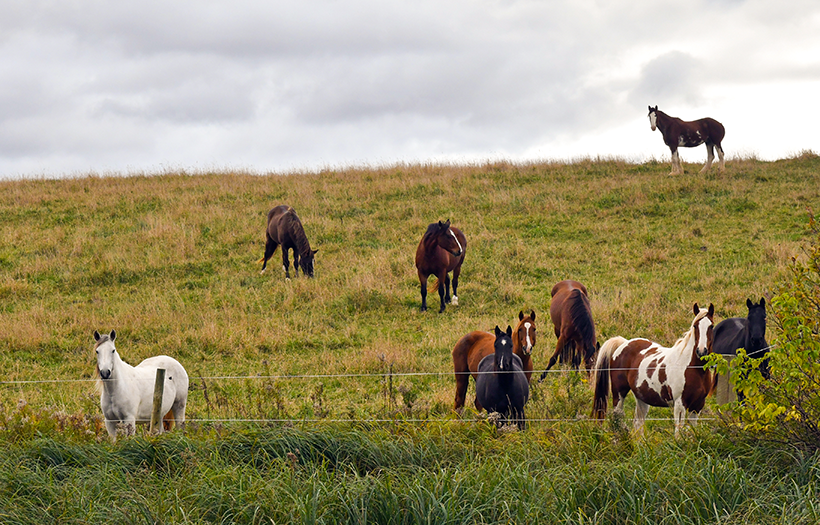Feeding Strategies for Diverse Horse Groups in Small Facilities

Managing a group of horses with varying nutritional needs in a small facility presents unique challenges. Differences in age, metabolism, temperament, workload, and at times based on whether their geldings or mares can make feeding time complex, especially when space and resources are limited. However, with thoughtful planning and a few practical strategies, it’s possible to meet the needs of every horse in your care.
Here are some key approaches to consider:
- Group horses by feeding needs and behavior.
Separating easy keepers from hard keepers can help ensure each horse receives the appropriate nutrition without competition or overconsumption. - Manage herd dynamics.
Identify and separate dominant horses during feeding to prevent bullying. Keep in mind that herd behavior can shift over time, so regular observation is essential. - Monitor body condition regularly.
Use Body Condition Scoring (BCS) to track changes and adjust feeding groups or rations as needed. - Provide multiple feeding stations.
Ensure there are at least as many feeders as horses—more if possible. Distribute hay evenly to give all horses equal access, especially those lower in the social hierarchy. - Use grazing muzzles for easy keepers.
On pasture, muzzles can help limit intake for horses prone to weight gain, allowing harder keepers more time to access forage. - Separate horses for concentrate feeding.
Use available spaces like paddocks, pens, or arenas to feed horses individually based on their dietary needs. This allows for tailored feeding—such as ration balancers for easy keepers or senior feeds for older horses. - Guard slower eaters if separation isn’t possible.
If facilities don’t allow for physical separation, consider supervising feeding to ensure slower eaters have time to consume their full ration. - Access to water
Remember access to water is extremely important and should be readily available. - Feed Texture
Often pelleted or extruded products are a good consideration to avoid dominant animals sorting grains based on their palatability
Feeding a mixed group of horses in a small space requires flexibility, observation, and a willingness to adapt. With the right strategies, you can maintain healthy body condition across your herd and ensure every horse receives the nutrition they need.
